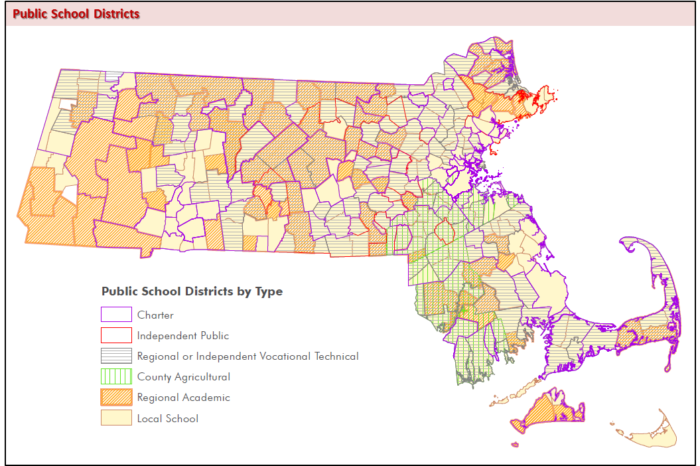How Top Suburban Schools Compare
Quality public schools drive both real estate development and student success. Many public schools in Massachusetts are widely regarded to have set high academic bars. There are pockets within the state, though, that cry out for much-needed improved schools.
It’s interesting to take a look at the spending habits of school districts. Specifically looking at some of Massachusetts suburban high schools, MCAS results are a good indicator of how a public school is doing compared to its peers. The Pioneer website MassReportCards compiles pertinent information (including MCAS information) and assigns a “grade” to public schools in Massachusetts based largely on standardized test (high school grades also consider dropout and college matriculation rates).
Take Wayland as an example. From data collected by Pioneer’s MassAnalysis, the amount of money the town spends annually per public school student is about $12,500 (with a total of around 2,500 students)—and the elementary school rating is an “A-” rating, consistently outperforming the state averages for the English, Math, and Science MCAS. The middle and high schools get an “A” and “A+” rating, respectively. With the money pouring into Wayland’s public schools, excellent results follow.
Some towns, like Weston, spend around $15,800 per public school student, $3,300 more than Wayland. The town has about 2,100 students in total; however, Weston’s elementary schools received a “A” and its middle school receives an “A-“, and the high school an “A+”. Weston is achieving close to the same results as Wayland, but spending substantially more.
On the other hand, Lexington, with 6,500 students, spends about $10,900 per student ($1,600 less than Wayland). Their rating for elementary school is an “A-“ (their middle school is rated an “A” and high school is an “A+” – the exact same as Wayland). Lexington seems to be doing more with less, although some of its efficiencies could in part be due to economies of scale.
Below is a chart detailing the top eleven wealthiest towns in Massachusetts with their associated public school grades given by MassReportCards. The ratings don’t differ by a wide margin as you go down the list from most wealthy to least wealthy.
*The following schools are regionalized: Dover-Sherborn Middle and High School; Lincoln-Sudbury High School; Manchester Essex Regional Elementary, Middle, and High School; Boxford’s Masconomet Regional Middle and High School
**Source
What does this mean for public schools in Massachusetts?
There are still more lessons to be learned and questions to be asked. By comparing spending with school performance using Pioneer’s transparency tools, the questions can be developed. It’s up to the public, especially parents, to ask them.
Sabrina Chishti is a Transparency Intern at Pioneer Institute from Tufts University majoring in biology and political science.




